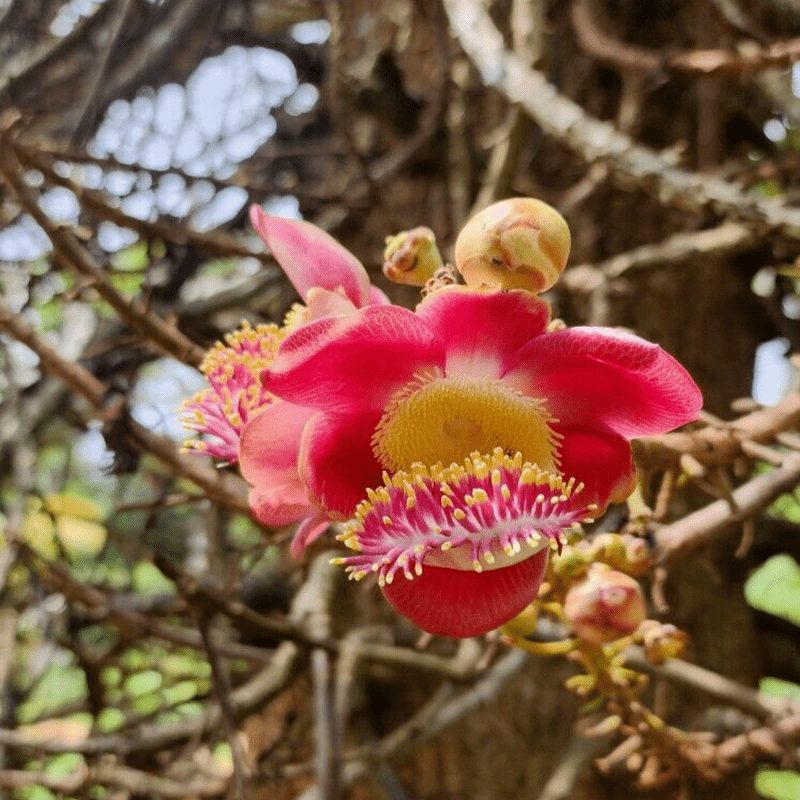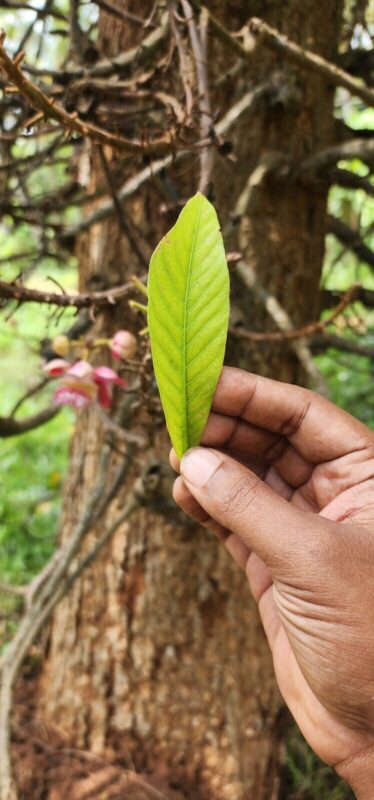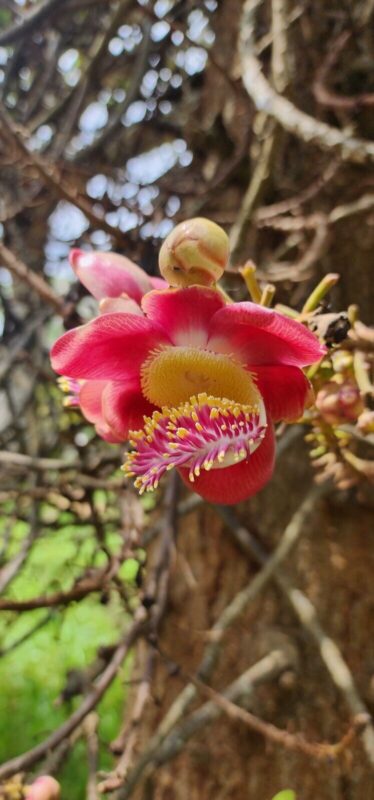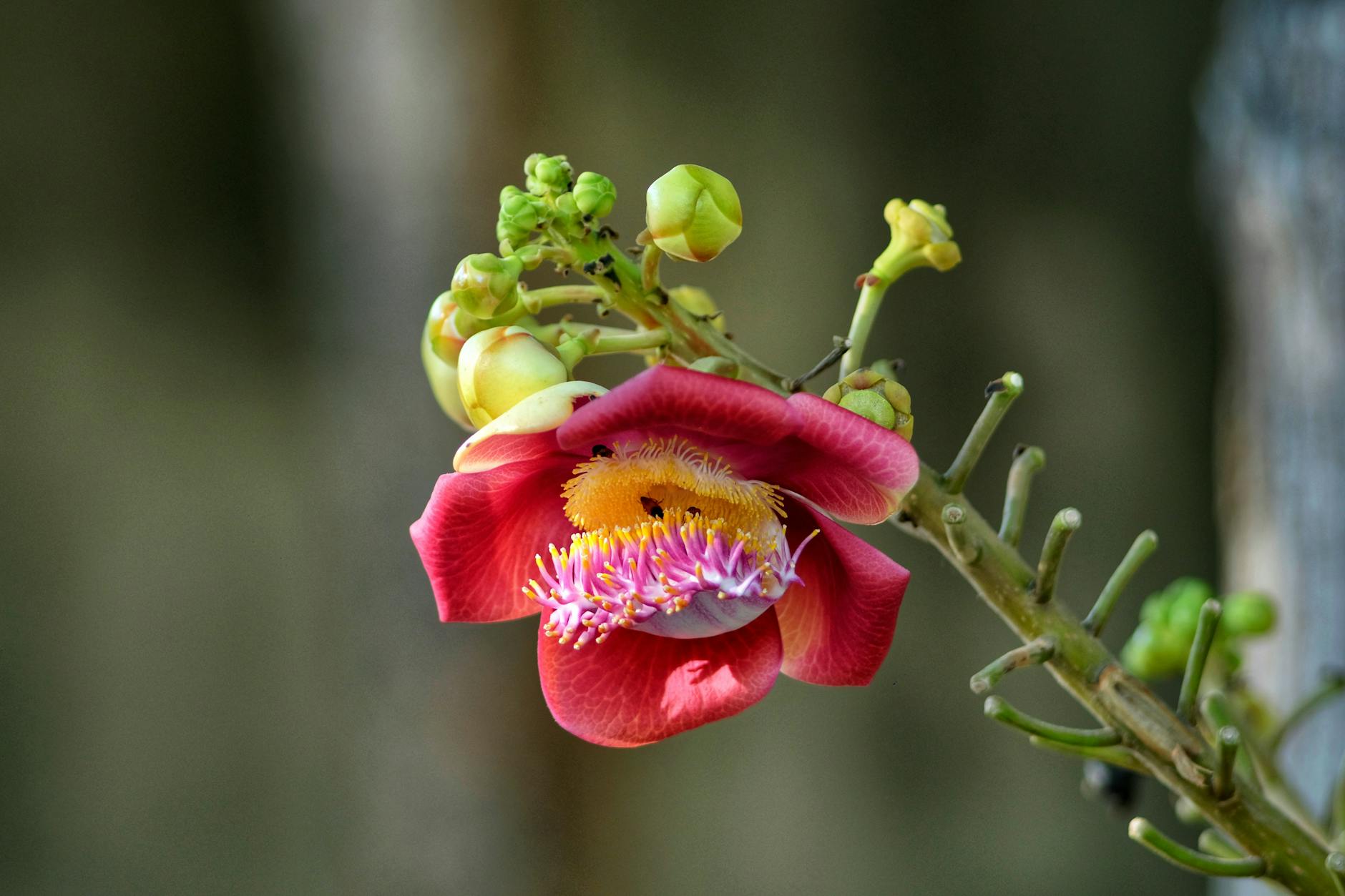Blog
Natural Cannonball Tree: An In-Depth Exploration of Couroupita guianensis

The Cannonball Tree, scientifically known as Couroupita guianensis, is a large, deciduous tropical tree native to the rainforests of Central and South America. Revered for its striking appearance and various medicinal properties, the Cannonball Tree has become an integral part of both traditional medicine and cultural practices in several regions. This article delves into the botanical characteristics, medicinal uses, economic significance, conservation status, and the challenges faced by this remarkable species.
Botanical Characteristics

Couroupita guianensis is a visually captivating tree that can grow up to 35 meters in height. Its unique features make it easily recognizable:
- Leaves: The leaves are large and compound, typically measuring between 8 to 31 centimeters in length. They are arranged alternately along the branches, forming a lush canopy.
- Flowers: The flowers are bell-shaped, exhibiting vibrant colors ranging from pink to yellow. They bloom profusely on the trunk and thick branches, creating a spectacular display that can feature up to 1,000 flowers at a time. The flowers emit a pleasant fragrance, particularly during dawn and dusk.
- Fruits: The tree produces large, woody fruits resembling cannonballs, measuring about 20 to 25 centimeters in diameter. These fruits contain clusters of small seeds surrounded by a white pulp that has a strong odor when ripe.
Habitat and Distribution
The Cannonball Tree thrives in tropical lowland forests, particularly in regions with rich, well-draining soil. It is primarily found in:
- Native Regions: Central and South America, including countries like Brazil, Colombia, and Venezuela.
- Cultivated Areas: Due to its ornamental value and unique characteristics, it is also cultivated in botanical gardens and parks around the world.
The tree prefers humid environments but can tolerate periods of flooding as well as dry conditions.
Medicinal Properties

Couroupita guianensis has been utilized in traditional medicine for centuries. Various parts of the tree—such as the bark, leaves, flowers, and fruit—are employed for their therapeutic benefits:
- Anti-inflammatory Properties: The bark and leaves are believed to possess anti-inflammatory effects, making them useful for treating conditions like arthritis and rheumatism.
- Wound Healing: A paste made from the leaves is used topically to promote healing of wounds and soothe skin irritations.
- Antifungal and Antibacterial Effects: Preparations derived from the Cannonball Tree have shown potential against various skin infections due to their antifungal and antibacterial properties.
- Antioxidant Activity: The fruit is rich in antioxidants that help neutralize harmful free radicals in the body.
- Digestive Health: Some traditional practices utilize parts of the tree to support digestive health, although scientific evidence for this use is limited.
- Respiratory Disorders: Certain formulations made from the tree are believed to be beneficial for respiratory conditions.
- Spiritual Significance: In some cultures, particularly in India, the Cannonball Tree holds spiritual significance and is associated with various religious ceremonies.
Economic Uses
Beyond its medicinal applications, Couroupita guianensis has notable economic importance:
- Ornamental Value: The striking appearance of its flowers makes it a popular choice for landscaping and ornamental gardening.
- Traditional Crafts: The hard shell of the fruit can be used to make small containers or decorative items.
- Animal Feed: The pulp surrounding the seeds is sometimes used as feed for domestic animals like pigs and chickens.
- Perfumes and Cosmetics: The fragrant flowers are utilized in making perfumes and cosmetics due to their pleasant aroma.
Conservation Status
Despite its numerous benefits, Couroupita guianensis faces threats primarily due to habitat loss and overexploitation:
- IUCN Status: While not currently listed as endangered by the IUCN, its populations are at risk due to deforestation and land conversion for agriculture.
- Legal Protection: Some regions have enacted laws to protect this species from illegal logging.
- Sustainable Practices: Encouraging sustainable harvesting methods can help maintain healthy populations while meeting economic demands.
Challenges Faced
- Deforestation: Rapid deforestation for agricultural development poses a significant threat to natural habitats where the Cannonball Tree grows.
- Urbanization: Expansion of urban areas leads to habitat fragmentation, further jeopardizing existing populations.
- Climate Change: Altered rainfall patterns and rising temperatures may impact the growth conditions for Couroupita guianensis.
- Lack of Awareness: There is often limited awareness regarding the ecological importance of this species among local communities.
Conservation Efforts

Efforts aimed at conserving Couroupita guianensis include:
- Reforestation Projects: Initiatives focused on restoring degraded habitats by planting native trees can help replenish populations.
- Community Engagement: Educating local communities about the ecological importance of the Cannonball Tree fosters conservation efforts.
- Research Initiatives: Continued scientific research into its medicinal properties can promote sustainable use while highlighting its value.
Conclusion
The Cannonball Tree (Couroupita guianensis) is an extraordinary plant with a rich history of medicinal use and economic significance. Its diverse applications—from traditional medicine to ornamental gardening—underscore its value in both cultural practices and modern industries. However, the challenges it faces necessitate urgent conservation efforts to protect this vital species for future generations.

Cannonball Tree
Discover more from Nath Mart
Subscribe to get the latest posts sent to your email.
